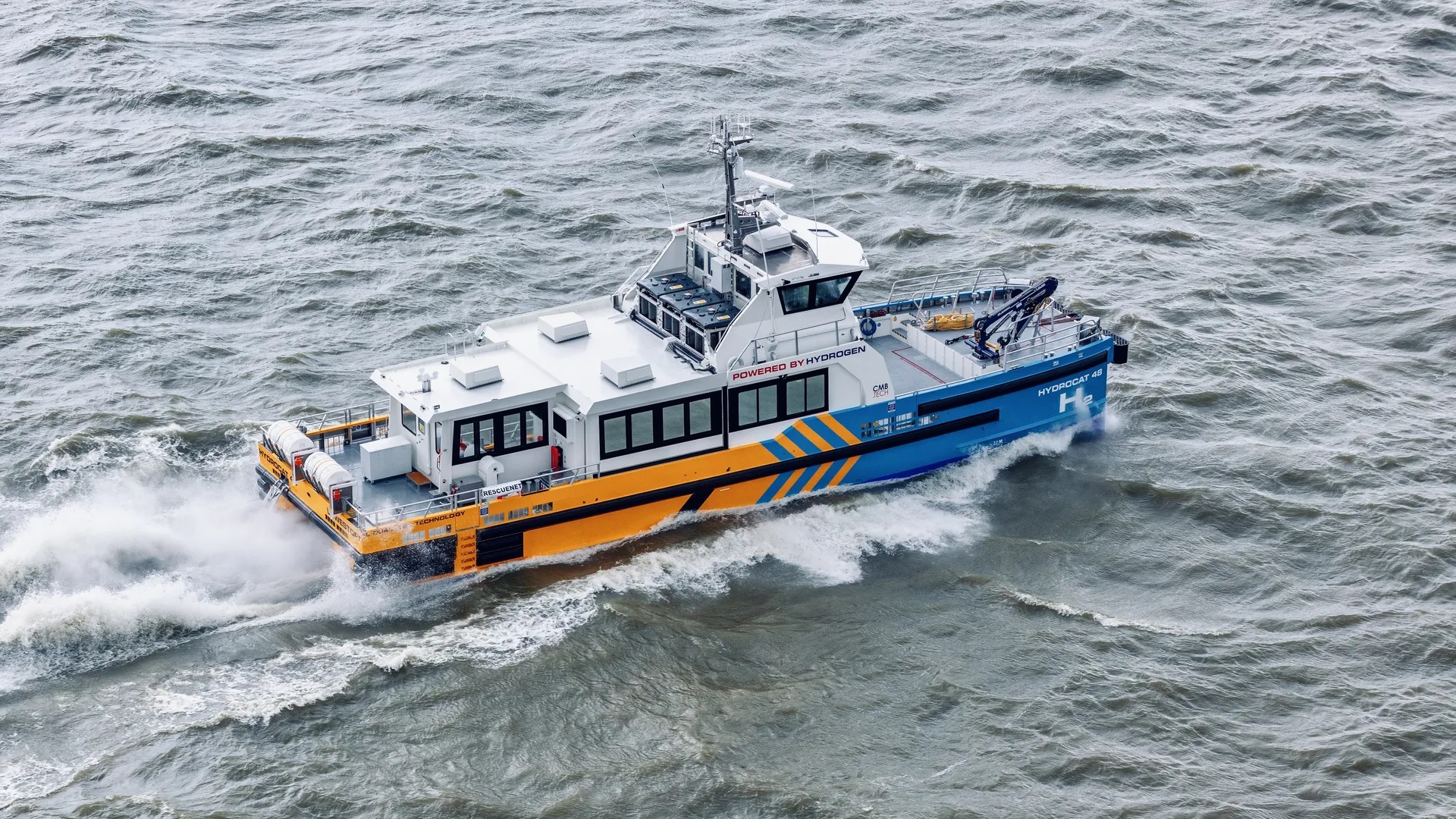Windcat Workboats announces plans for another six hydrogen-powered vessels

In May 2022, Windcat Workboats and CMB.TECH launched the Hydrocat 48, the world’s first hydrogen powered CTV, at the World Hydrogen Summit in Rotterdam. Following the delivery and trials with launching customer Vestas, Windcat Workboats, together with its joint venture partners TSM and FRS, are pleased to announce an additional order of six hydrogen-powered vessels by 2024.
This pioneering development for both the marine and offshore wind industry is the first of its kind to use clean fuels to reduce up to 80% of traditional fuel consumption and associated emissions. These vessels offer the industry a cost-effective solution to significantly reduce maintenance vessel emissions, which can be applied to any wind farm today.
"I am proud of this announcement which highlights our commitment to rapidly reducing emissions of offshore wind support vessels. The investment that we are making gives our customers access to more hydrogen-powered vessels in a short time, which will support them to achieve their own climate targets. We are actively engaging with hydrogen producers, clients, port authorities and class societies to ensure hydrogen fuel is readily available for use", Willem van der Wel - Managing Director Windcat Workboats.
Windcat has moved beyond the drawing board and has now developed practical hydrogen technologies, in terms of operational and fuel capacity.
The six additional hydrogen-powered vessels include four vessels of the MK3.5H2 series, two of which will be delivered in 2022 and two in 2023. The next vessel which will be delivered in this series is intended for the German offshore-market and will be operated by our joint-venture partner FRS Windcat. The other two vessels will be of the new MK5 series, 27-metre vessels with double the hydrogen capacity of the MK3.5H2 series.
Further optimisation: mono-fuel
CMB.TECH and Windcat Workboats are working together to further optimise engine capacities with the aim of increasing the percentage of hydrogen used in their dual fuel design. The long-term plan is to develop the technology and infrastructure to eventually enable a mono-fuel option through the internal combustion engine (ICE).
Hydrogen supply solutions
The hydrogen supply chain is still in its infancy and will need to develop to a stage where it is readily available in more locations. The introduction of more hydrogen-powered vessels will increase the demand for hydrogen, which will facilitate the development of hydrogen infrastructure.
CMB.TECH and Windcat have already developed solutions for delivering hydrogen to vessels. This includes a 40ft 500bar trailer capable of transporting hydrogen for remote refuelling of all different applications currently in use. This enables hydrogen bunkering in various port locations that are a distance from the hydrogen source. Multiple applications and customers can be served by this one system, meaning the Hydrocat fleet has access to hydrogen bunkering.
